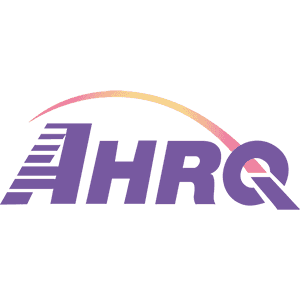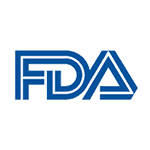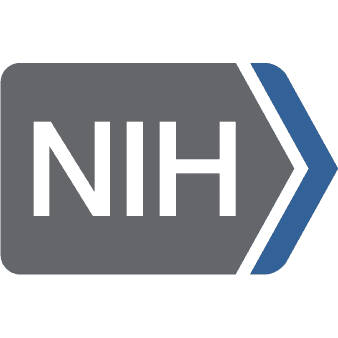HIV Research Activities
Supporting Research to Effectively Prevent, Diagnose, and Treat HIV
In the three decades since the first cases of AIDS were reported, Federal investments in basic, biomedical, behavioral, and social science research have led to numerous HIV prevention interventions and life-saving treatments. Several federal agencies conduct or support HIV research activities.
Leading the Way in HIV Research
The National Institutes of Health (NIH), a part of the U.S. Department of Health and Human Services (HHS), is the Nation’s primary medical research agency, making important discoveries that improve health and save lives. NIH conducts and supports a comprehensive program of basic, behavioral, clinical, and translational research on HIV/AIDS and its associated coinfections, comorbidities, and other complications. Since HIV crosses nearly every area of medicine and scientific investigation, the response to the HIV pandemic requires a multi-Institute, multidisciplinary, global research program. At NIH, this research is coordinated by the Office of AIDS Research (OAR) and carried out by nearly all the NIH Institutes and Centers, in both at NIH and at NIH-funded institutions worldwide. The NIH HIV/AIDS Research Program represents the world’s largest public investment in AIDS research.
Within NIH, the National Institute of Allergy and Infectious Diseases (NIAID) manages the largest portfolio of HIV/AIDS research activities. NIAID-supported investigators have made groundbreaking scientific discoveries that have led to significant progress in the fight against HIV/AIDS. Among these discoveries, NIAID-supported research has demonstrated that people living with HIV who take antiretroviral medications daily as prescribed and who achieve and maintain an undetectable viral load have effectively no risk of sexually transmitting the virus to an HIV-negative partner.
The NIAID-supported HPTN 052 study, which involved more than 1,600 heterosexual couples over 10 years, found that starting and sustaining treatment for HIV infection early, when the immune system is relatively healthy, essentially eliminated the transmission of HIV. No HIV transmission was observed when antiretroviral therapy consistently, durably suppressed the virus in the partner living with HIV. While some transmission events did occur in the study, new infections resulted when the partner living with HIV was not fully virally suppressed due to either having just started antiretroviral therapy, or for whom treatment no longer was working and the virus was replicating. The study also showed that early treatment initiation improved health outcomes for people living with HIV.
The HPTN 052 results, along with those of another NIAID-funded trial (the START study), which showed that those living with HIV who received early treatment significantly reduced their risk of illness and death, helped influence the World Health Organization in 2015 to recommend that everyone living with HIV should begin treatment upon diagnosis.
Seeking a Cure for HIV
NIAID also invests in basic and clinical research with the goal of developing a safe, affordable and scalable cure for HIV and AIDS. NIAID’s research efforts include studies to identify the precise locations where HIV hides in the body (known as viral reservoirs), determine how those reservoirs are established and maintained, and develop strategies to minimize or deplete them. An HIV cure in the classic sense, meaning it removes all HIV from the body, would require eradication of viral reservoirs. Treatment-free remission, also known as a functional cure, would not eradicate reservoirs but would allow a person living with HIV to control the virus without daily medication.
Making Progress Toward an HIV Vaccine
Historically, vaccination has been the best method for protecting people from infectious diseases. While many HIV prevention techniques are available, the development of a safe and effective HIV vaccine remains key to realizing a durable end to the HIV/AIDS pandemic. NIAID and its global partners are pursuing numerous research strategies to develop next-generation vaccine candidates.
Developing Safe and Effective HIV Treatments
One of NIAID’s greatest success stories is that its research led to the development of numerous antiretroviral drugs to treat HIV/AIDS, turning what was once a uniformly fatal disease into a manageable chronic condition for many. NIAID is working to find new and more effective therapeutic products, drug classes, and combinations as well as safe and effective treatments for related co-infections and complications.
Research to Prevent HIV Infection and Transmission
NIAID also conducts and supports research to develop and improve cutting-edge tools and techniques that can work to prevent HIV in populations around the world.
The Centers for Disease Control and Prevention (CDC) also provides national leadership for HIV prevention research, including the development of biomedical and behavioral interventions to prevent HIV transmission and reduce disease progression in the United States and internationally. CDC’s research efforts include identifying scientifically proven, cost-effective, and scalable interventions and prevention strategies to be implemented as part of a high-impact prevention approach for maximal impact on the HIV epidemic.
Scroll down to read about the HIV research activities of individual Federal agencies and offices.




